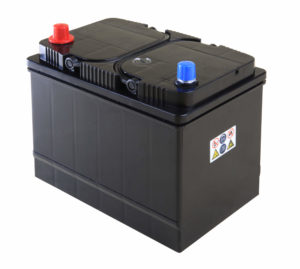The solar power industry has been rapidly growing, and the demand for solar batteries has surged. Solar batteries play a crucial role in storing excess energy solar panels generate. Understanding the factors influencing solar battery prices is essential for making informed decisions when investing in a solar energy system. In this article, we will delve into the various aspects that impact the cost of solar batteries, enabling you to navigate the market confidently.
Contents
- 1 Key Takeaways
- 2 Understanding Solar Batteries
- 3 Types of Solar Batteries
- 4 Factors That Influence Solar Battery Price
- 5 Is the Cost of Solar Batteries Worth It?
- 6 Factors That Determine the Overall Cost of Going Solar
- 6.1 Solar Panel System: Harnessing the Sun’s Power
- 6.2 Battery Storage System: Enhancing Energy Independence
- 6.3 Installation and Labor Costs: Ensuring Quality and Safety
- 6.4 Government Incentives and Rebates: Financial Support
- 6.5 Maintenance and Operational Costs: Ensuring Longevity
- 6.6 Energy Efficiency Measures: Optimizing Energy Consumption
- 6.7 Financing Options: Making Solar More Accessible
- 7 Case Study: Maximizing Value in Solar Battery Investment
- 8 Expert Insights From Our Solar Panel Installers About Factors That Affect Solar Battery Price
- 9 Experience Solar Excellence with Us!
- 10 Conclusion
Key Takeaways
- Factors such as battery capacity, lifespan, efficiency, technology, and market dynamics influence the price of solar batteries, and considering these factors is crucial when investing in a solar energy system.
- Solar batteries provide financial benefits, environmental advantages, and long-term value, making them worthwhile investments for energy independence and sustainability.
- When evaluating the cost of going solar, it’s important to consider the overall expenses of the entire solar power system, including solar panels, battery storage, installation, and available government incentives.
Understanding Solar Batteries
What are Solar Batteries, and How Do They Work?
Solar batteries are energy storage devices that capture and store the surplus electricity solar panels generate. They allow homeowners to utilize the stored energy during low or no sunlight. Integrating a solar battery system into your solar panel setup can achieve greater energy independence and reduce your reliance on the grid.
Types of Solar Batteries
When it comes to solar batteries, there are several types available in the market. Each type has its characteristics, advantages, and drawbacks. Let’s explore some of the most popular options:
Lead-Acid Batteries
Lead-acid batteries have been used for many years and are known for their durability and affordability. They are reliable for off-grid applications and can handle deep discharge cycles. However, they require regular maintenance and have lower energy density than other battery types.
Lithium-Ion Batteries
Lithium-ion batteries have gained significant popularity recently due to their high energy density, longer lifespan, and lighter weight. They are commonly used in residential solar energy storage systems. Although they come with a higher upfront cost, their superior performance and efficiency make them a preferred choice for many homeowners.
Factors That Influence Solar Battery Price
Regarding solar battery systems, various factors come into play to determine their price. Understanding these factors can help homeowners make informed decisions and choose the right solar battery solution that aligns with their energy storage needs and budget. Let’s delve into the key factors that influence the pricing of solar batteries.
Battery Capacity: A Crucial Consideration
One of the primary factors influencing the price of solar batteries is their capacity. Battery capacity refers to the amount of energy stored in the battery. Batteries with higher capacity can store more energy, giving homeowners greater backup power during periods of low sunlight or outages. However, it’s important to note that higher-capacity batteries often have a higher price tag. The cost of materials, technology, and manufacturing processes required to achieve larger storage capabilities contribute to the overall price of the battery.
Battery Lifespan: Longevity Matters
The lifespan of a solar battery is another crucial consideration when evaluating its price. Battery lifespan refers to the duration a battery can provide reliable performance before it needs replacement. Batteries with longer lifespans tend to be more expensive upfront but offer significant value over their extended operational life. Investing in a battery with a longer lifespan can result in cost savings over time, as homeowners won’t need to replace the battery as frequently, reducing both the hassle and expenses associated with battery replacements.
Efficiency and Performance: Optimizing Energy Conversion
Efficiency and performance characteristics play a vital role in determining the price of solar batteries. Higher-efficiency batteries can convert a greater percentage of the energy they receive from solar panels into usable electricity. This efficiency directly impacts the battery’s performance and ability to store and deliver energy effectively. Batteries with advanced technologies and features often command higher prices due to their superior efficiency and enhanced performance capabilities. While these batteries may have a higher upfront cost, their long-term energy savings and performance advantages can make them a worthwhile investment.
Battery Type and Technology: Choosing the Right Fit
The type and technology of the battery also influence its price. Different types of batteries, such as lead-acid and lithium-ion, offer distinct characteristics and performance levels. Lead-acid batteries are known for their durability and affordability, making them popular for off-grid applications. On the other hand, lithium-ion batteries have gained significant popularity due to their higher energy density, longer lifespan, and lighter weight. However, lithium-ion batteries often have a higher price tag due to their advanced technology and superior performance. Evaluating the pros and cons of each battery type and selecting the right fit for your specific needs and budget is crucial to ensure the best value for your investment.
Supply and Demand Dynamics: Market Forces at Play
Supply and demand dynamics also play a role in the pricing of solar batteries. Prices tend to rise when the demand for solar batteries exceeds the available supply. Factors such as manufacturing capacity, industry competition, and market trends can influence supply and demand dynamics. Advancements in battery production technologies, economies of scale, and increased competition among manufacturers can lead to price reductions over time. It’s important to stay informed about market trends and consult with reputable solar battery providers to understand the current pricing landscape and secure the best possible deal.
By considering these factors – battery capacity, lifespan, efficiency and performance, battery type and technology, and supply and demand dynamics – homeowners can understand the various elements that contribute to the pricing of solar batteries. This knowledge empowers them to make informed decisions and select the most suitable solar battery solution that meets their energy storage requirements while optimizing their investment.

Is the Cost of Solar Batteries Worth It?
When evaluating the cost of solar batteries, homeowners must consider the long-term benefits and value they provide. While solar battery systems require an upfront investment, they offer numerous advantages that make them a worthwhile addition to a solar energy setup. Let’s explore why the cost of solar batteries is often justified.
Financial Benefits: Savings and Independence
Investing in a solar battery system can have significant financial benefits over time. By storing excess energy generated by solar panels, homeowners can reduce their reliance on the grid, lowering electricity bills. During low sunlight or grid outages, solar batteries allow homeowners to use the stored energy, providing an uninterrupted power supply and reducing the need to draw electricity from the grid. Additionally, some utility companies offer net metering or feed-in tariffs, enabling homeowners to earn credits or receive payments for the surplus energy they feed back into the grid. These financial incentives can further enhance the return on investment for solar battery systems.
Environmental Advantages: Sustainability and Resilience
Solar batteries promote a greener and more sustainable future by promoting renewable energy sources. By storing excess solar energy, homeowners can reduce their reliance on fossil fuel-based electricity, reducing their carbon footprint and contributing to climate change mitigation. Solar batteries also enhance the energy system’s resilience, allowing homeowners to have backup power during grid outages or emergencies. By combining solar panels with battery storage, homeowners can have a reliable and clean energy source that powers their homes even when the grid is unavailable.
Long-Term Value: Return on Investment
While the upfront cost of solar batteries may seem significant, it’s important to consider the long-term value they provide. Solar batteries are designed to have a long operational life, often spanning a decade or more. By investing in a high-quality battery with a longer lifespan, homeowners can benefit from extended periods of reliable energy storage without frequent battery replacements. This translates into long-term cost savings and an increased return on investment. Additionally, as battery technology advances and prices gradually decrease, the value proposition of solar batteries becomes even more compelling over time.
Considering the financial benefits, environmental advantages, and long-term value, solar batteries can be a worthwhile investment for homeowners seeking energy independence, resilience, and sustainable living. By carefully assessing their energy needs, evaluating the cost savings potential, and exploring available incentives, homeowners can make an informed decision about incorporating solar battery systems into their solar energy setup.

Factors That Determine the Overall Cost of Going Solar
The overall cost of going solar encompasses various factors beyond the price of solar batteries. It’s essential to consider the broader context of the entire solar power system to understand the complete cost structure. Let’s explore the key factors determining the overall solar cost.
Solar Panel System: Harnessing the Sun’s Power
The cost of a solar panel system plays a significant role in the overall expense. It includes the cost of the solar panels and other components, such as inverters, mounting hardware, and installation. The solar panels’ quality, efficiency, and capacity impact their price. Investing in high-quality panels from reputable manufacturers can ensure optimal energy generation and system performance.
Battery Storage System: Enhancing Energy Independence
Integrating a battery storage system into a solar setup allows homeowners to maximize the benefits of solar energy. While solar batteries are a significant component of the overall system, they contribute to the cost structure alongside other components. The price of battery storage systems varies depending on the capacity, technology, and brand. Carefully considering the energy storage needs and evaluating available options is essential to determine the most cost-effective solution.
Installation and Labor Costs: Ensuring Quality and Safety
A solar power system’s installation and labor costs impact the overall expense. These costs include site assessment, system design, permitting, installation labor, electrical work, and grid interconnection. The complexity of the installation process and any necessary electrical upgrades can influence the overall cost. It is crucial to work with reputable and experienced solar installers who can ensure a high-quality installation that meets safety standards and maximizes system performance. While labor costs may vary, it is important to prioritize quality and expertise to ensure the system operates efficiently and reliably for years to come.
Government Incentives and Rebates: Financial Support
Government incentives and rebates can significantly impact the cost of going solar. Many governments and local authorities offer various programs to promote the adoption of renewable energy systems. These incentives can come in tax credits, grants, or rebates, reducing the upfront cost of installing solar panels and battery storage systems. Researching and understanding the available incentives in your region is essential to take full advantage of these financial support mechanisms and further offset the overall cost of going solar.
Maintenance and Operational Costs: Ensuring Longevity
While the initial investment in a solar power system is a significant consideration, homeowners should also factor in the maintenance and operational costs. Solar panels generally require minimal maintenance, but regular inspections, cleaning, and occasional repairs may be necessary. Additionally, some batteries may require periodic maintenance, such as capacity checks or firmware updates, to ensure optimal performance. IIncludingthese ongoing costs in the overall evaluation of the system’s long-term affordability. is important
Energy Efficiency Measures: Optimizing Energy Consumption
Another aspect that impacts the overall cost of going solar is the implementation of energy efficiency measures. Homeowners can undertake energy efficiency upgrades before installing a solar power system to reduce overall energy consumption. This may include improving insulation, upgrading appliances to energy-efficient models, or implementing smart home technologies that optimize energy usage. By reducing energy demand, homeowners can potentially install a smaller solar panel system or battery storage capacity, thus lowering the overall cost of the system.
Financing Options: Making Solar More Accessible
Various financing options are available to help make the transition to solar power more accessible. Homeowners can explore solar loans, leasing arrangements, or power purchase agreements (PPAs). These financing models allow homeowners to spread out the cost of the system over time, making it more affordable and manageable. ASolarleasing or PPA arrangements can also eliminate the need for upfront investment, making solar energy accessible to a broader range of homeowners.
By considering these factors – the cost of solar panels, battery storage, installation and labor, government incentives, maintenance and operational costs, energy efficiency measures, and financing options – homeowners can understand the overall cost of going solar. Evaluating the specific circumstances, energy needs, and financial considerations is crucial to make an informed decision that aligns with their budget and long-term sustainability goals.
Case Study: Maximizing Value in Solar Battery Investment
Background
At Solar Panels Network USA, our commitment to providing high-quality, sustainable energy solutions is reflected in our approach to solar battery installations. Understanding the factors that affect solar battery prices is critical for both us and our clients to ensure informed decisions that maximize value and efficiency.
Project Overview
We were approached by a homeowner looking to upgrade their solar energy system with a reliable and efficient battery storage solution. The primary goal was to achieve greater energy independence and reduce reliance on the grid while considering the long-term financial benefits.
Implementation
Battery Selection
We began by evaluating the client’s energy needs and budget to select the most suitable battery type. Given the requirements for high energy density and long lifespan, we recommended a lithium-ion battery. This decision was influenced by the battery’s advanced technology, superior performance, and efficiency despite its higher upfront cost.
Capacity and Lifespan
Understanding that battery capacity is a crucial factor, we selected a battery with sufficient capacity to meet the homeowner’s energy storage needs. The chosen battery offered a balance between cost and storage capability, ensuring ample backup power during low sunlight periods. Additionally, we focused on a battery with an extended lifespan to provide long-term savings and reduce the frequency of replacements.
Efficiency and Performance
The selected lithium-ion battery also boasted high efficiency, converting a significant percentage of the energy received from solar panels into usable electricity. This efficiency not only optimized energy conversion but also enhanced the overall performance of the solar energy system, justifying the higher initial investment.
Results
The installation resulted in significant improvements in energy independence for the homeowner. The chosen battery’s high capacity and efficiency ensured a reliable energy supply during periods of low sunlight and grid outages. Over time, the homeowner experienced reduced electricity bills and benefited from available net metering credits, further enhancing the financial return on investment.
Summary
This case study underscores the importance of considering various factors such as battery capacity, lifespan, efficiency, and technology when investing in solar batteries. By selecting a high-quality lithium-ion battery, we were able to provide a solution that offered long-term value, financial benefits, and enhanced energy independence for the homeowner. At Solar Panels Network USA, our expertise ensures that our clients receive tailored solutions that meet their specific energy needs and budget, maximizing the benefits of solar energy systems.
Expert Insights From Our Solar Panel Installers About Factors That Affect Solar Battery Price
Understanding the key factors that influence solar battery prices is crucial for homeowners. Battery capacity and lifespan significantly impact cost, but investing in high-quality batteries with longer lifespans can provide substantial long-term savings. Efficiency and performance are also critical, as higher efficiency batteries offer better energy conversion, justifying their higher price.
Senior Solar Installer
The type and technology of the battery play a vital role in pricing. Lithium-ion batteries, for instance, are more expensive due to their superior technology and performance. However, their longer lifespan and higher energy density make them a preferred choice for many homeowners, despite the upfront cost.
Lead Solar Technician
Market dynamics, including supply and demand, can cause price fluctuations in solar batteries. Staying informed about industry trends and advancements can help homeowners make timely investments and secure better deals.
Solar Energy Consultant
Experience Solar Excellence with Us!
Trust in Solar Panels Network USA, where our seasoned experts deliver top-quality solar solutions for homes and businesses nationwide. With a legacy of countless successful installations and a commitment to sustainable energy, we’re your reliable partner in the solar journey. Ready for a brighter, eco-friendly future? Call us now at (855) 427-0058 and harness the power of the sun!
Conclusion
Understanding the factors influencing solar battery prices is essential for anyone considering a solar energy system with energy storage capabilities. By considering factors such as battery capacity, lifespan, efficiency, technology, and market dynamics, you can make an informed decision that aligns with your energy needs and budget. Remember, investing in solar batteries is not only about upfront costs but also about the long-term value, financial benefits, and positive environmental impact they offer. When evaluating the cost of going solar, consider the overall system expenses, installation costs, and available government incentives. By assessing these factors comprehensively, you can power your home with clean, sustainable energy while optimizing your investment.
About the Author
Solar Panels Network USA stands at the forefront of solar energy solutions, driven by a team of seasoned solar engineers and energy consultants. With over decades of experience in delivering high-quality solar installations and maintenance, we are committed to promoting sustainable energy through customer-centric, tailored solutions. Our articles reflect this commitment, crafted collaboratively by experts to provide accurate, up-to-date insights into solar technology, ensuring our readers are well-informed and empowered in their solar energy decisions.

